Monday is a competent project management software solution and it might be all that some teams need. However, it might not be the best option for content marketing-related projects. The platform lacks native approval features, while its social media calendar does not facilitate direct publishing, leaving content marketing and social media managers looking for Monday alternatives that can better fit their specific needs.
In this article, I’ve compiled a list of the best Monday alternatives currently available to help set you and your team up for content management success.
Why you should look for Monday.com alternatives
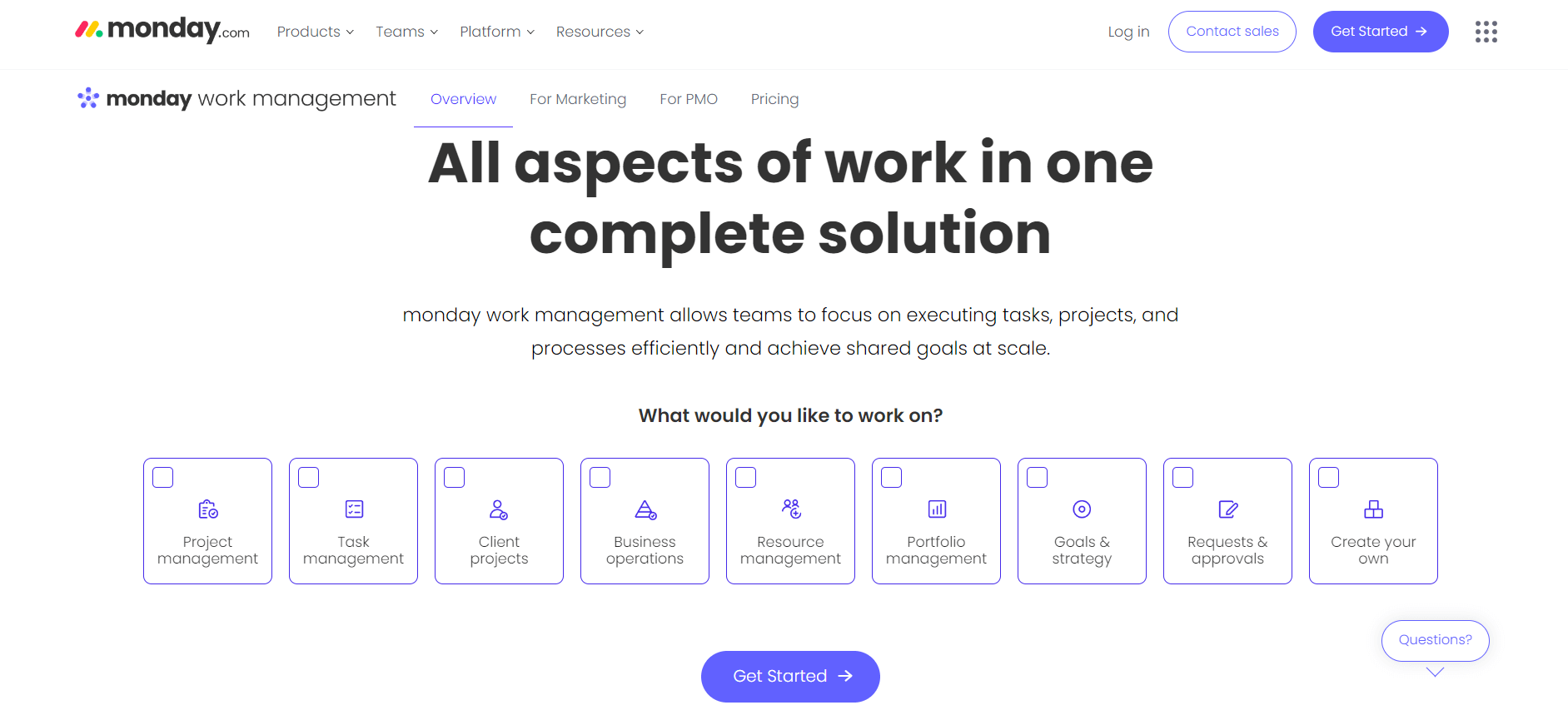

Monday.com is a work management solution with solid project management and collaboration features.
The platform allows you to set up task dependencies and manage projects through numerous views, like Kanban, calendar, timeline, map, and chart layouts. As for collaboration tools, Monday stands out through its collaborative Whiteboards — ideal for brainstorming.
Monday banks on customization. The platform includes 200+ templates fit for various industries and use cases — from content calendars to real estate property management, and more. Monday also includes a massive app marketplace with hundreds of integrations designed to boost the platform’s functionality.
That brings us to our first drawback — the platform will take a while to customize to your needs. Crucial project management features, like approvals, are also only accessible through the app marketplace. It’s worth noting that not all apps are free to use.
The platform’s free plan is only available for up to two users, while the entry-level package lacks important features, like automation, time-tracking, and extra project views aside from Kanban boards.
Planning
Monday lets you plan projects through numerous views. Despite the platform’s extensive feature set, I found it surprisingly easy to navigate. You have quick access to most features — you don’t have to dig through menus and sub-menus.
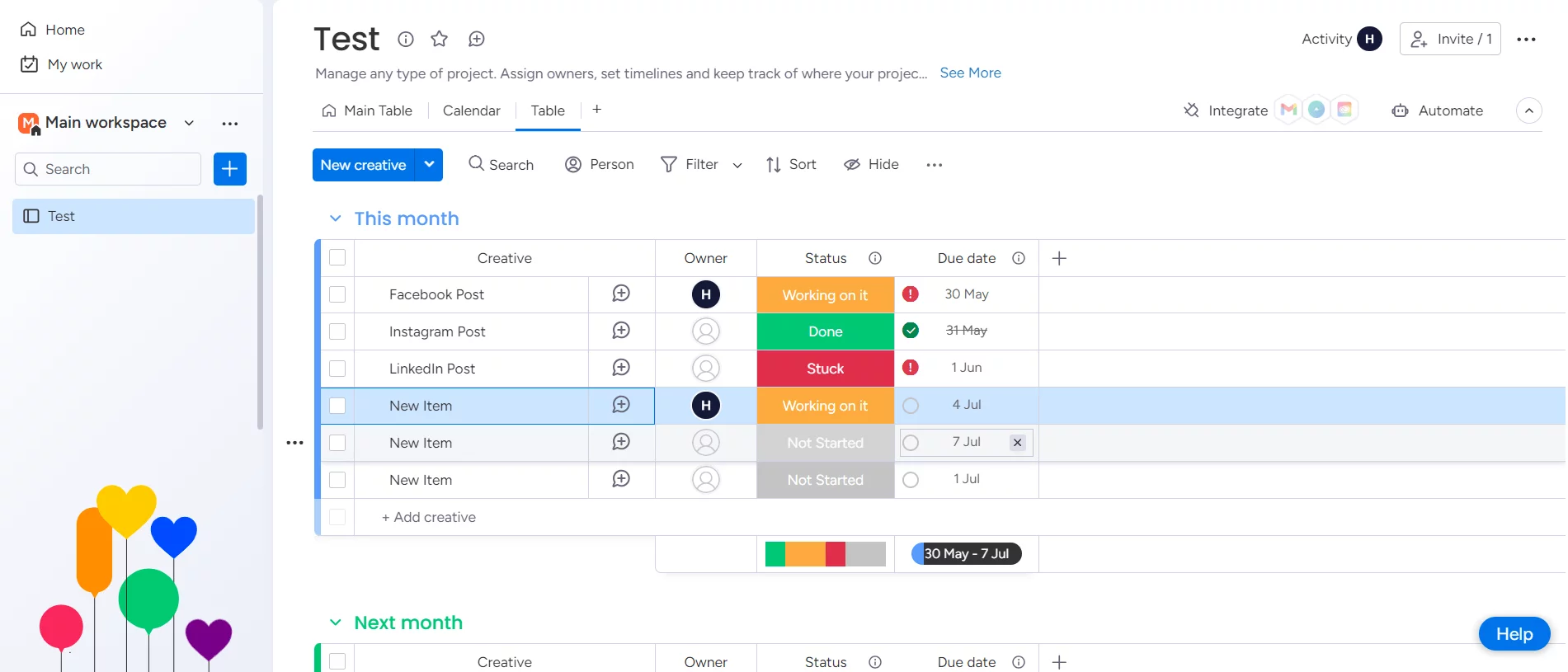

The platform’s intuitive interface also lets you organize tasks via a drag-and-drop interface. You can easily monitor task status with Monday’s predefined color-coded labels, or customize the labels to fit your specific needs.
Other notable features include the option to create separate workspaces, projects, or portfolios (groups of projects) — each with its own team members. However, I noticed that the platform’s views are rather tricky for working on visual assets.
You don’t get access to content previews while leaving feedback, which is a bit of a hassle. You first have to click on a task, then click on Files, open up the assets, and leave your feedback from there — it takes an unnecessary amount of clicks.
Collaboration
Monday allows you to collaborate with team members through direct comments under each specific task. You can mention team members, reply to comments, and mark them as resolved whenever teammates address the feedback.
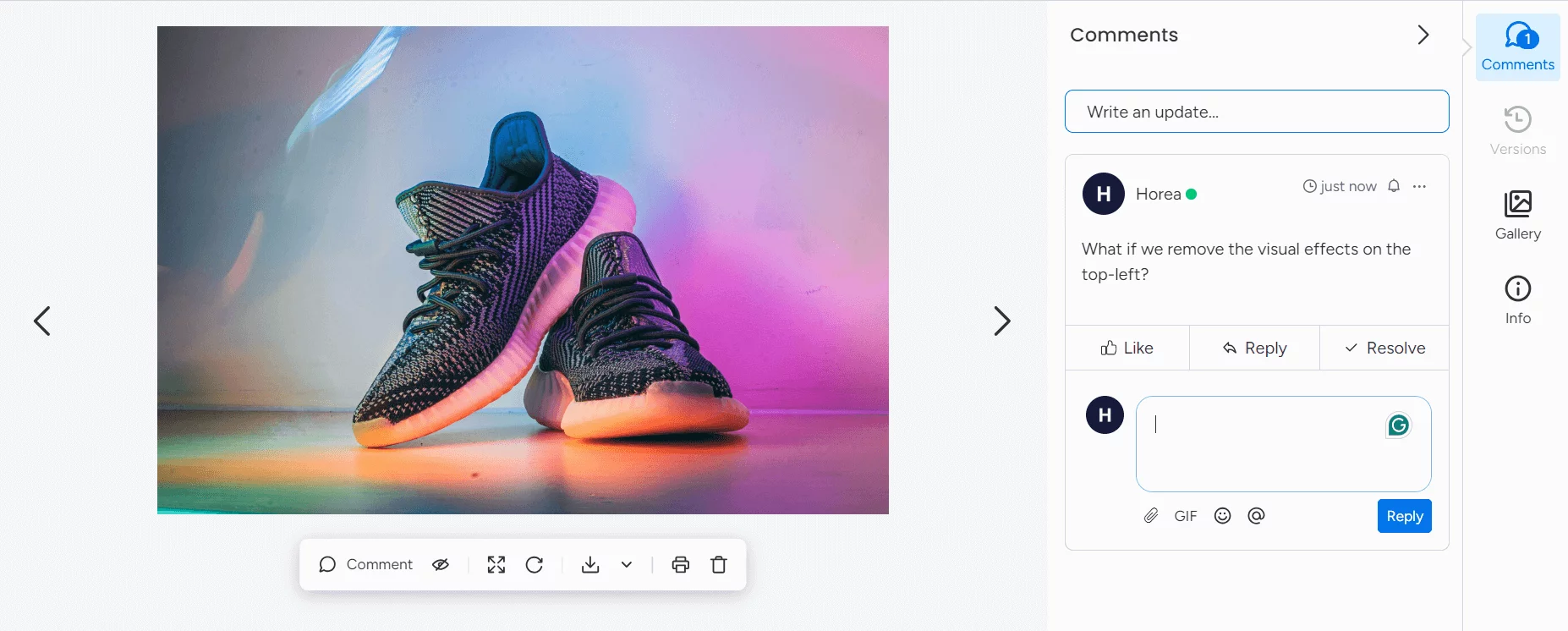

You can also leave feedback through visual annotations — convenient for visual assets.
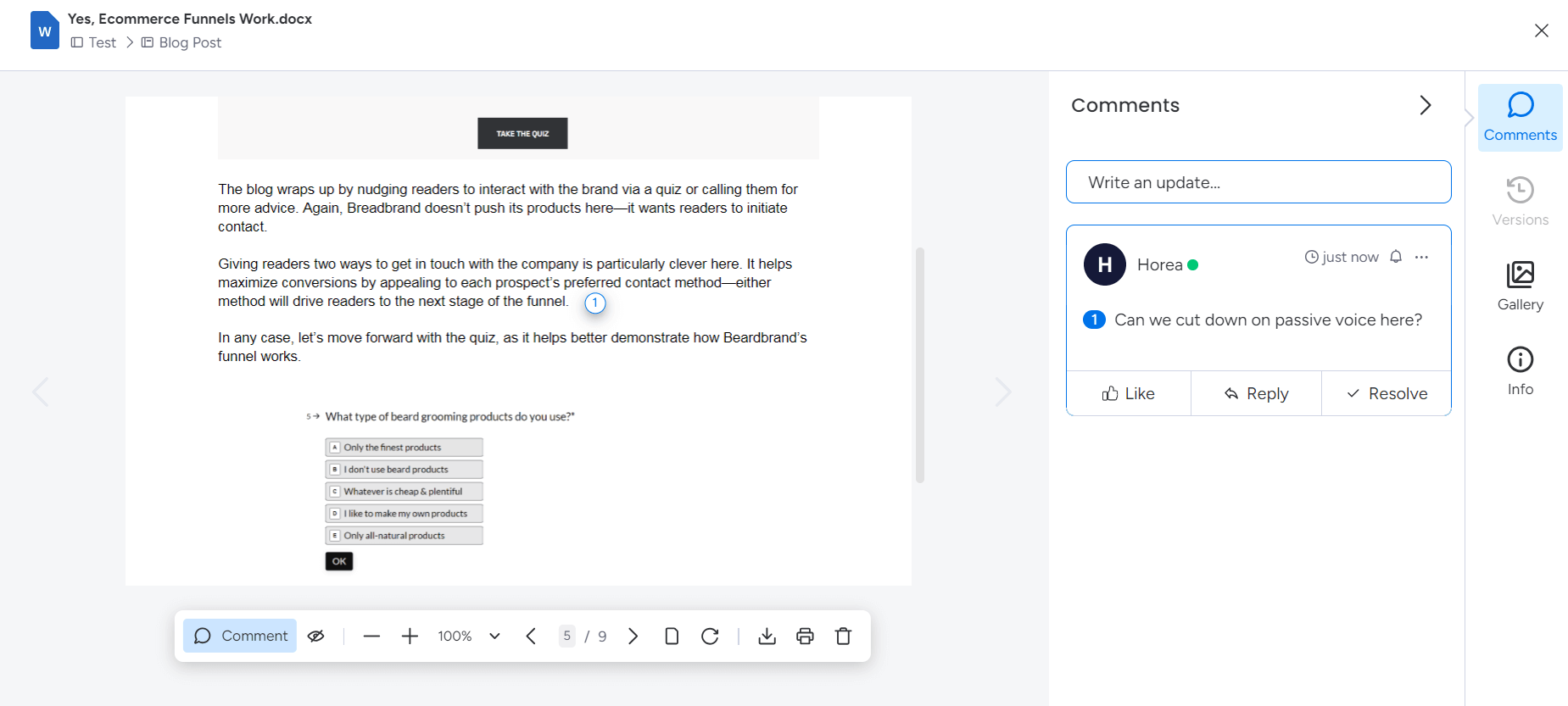

However, I noticed Monday lacks the option to leave feedback on specific text fragments, which can cause confusion on content-based projects.
Approvals
Approvals are only available in Monday’s app marketplace. The good news, you’ve got a good range of choices — you can find plenty of both free and paid approval tools. Still, a bsa uilt-in approval functionality would’ve been more than welcome.
Pricing: You can use Monday for free, while paid plans start at $9 per user per month (billed annually) for up to three users.
Here’s why marketers should consider Monday alternatives in 2024
- Scalability: The free version is quite limited, while the pricing differences between paid packages are steep. Using paid add-ons will also bump up the price.
- Convenience: Although the interface is intuitive, collaborating on the platform can turn into a bit of a headache — especially in content-heavy projects.
- Deployment time: Customizing the platform to suit your needs will likely take quite some time.
1. Planable – best project management tool for content collaboration and approvals
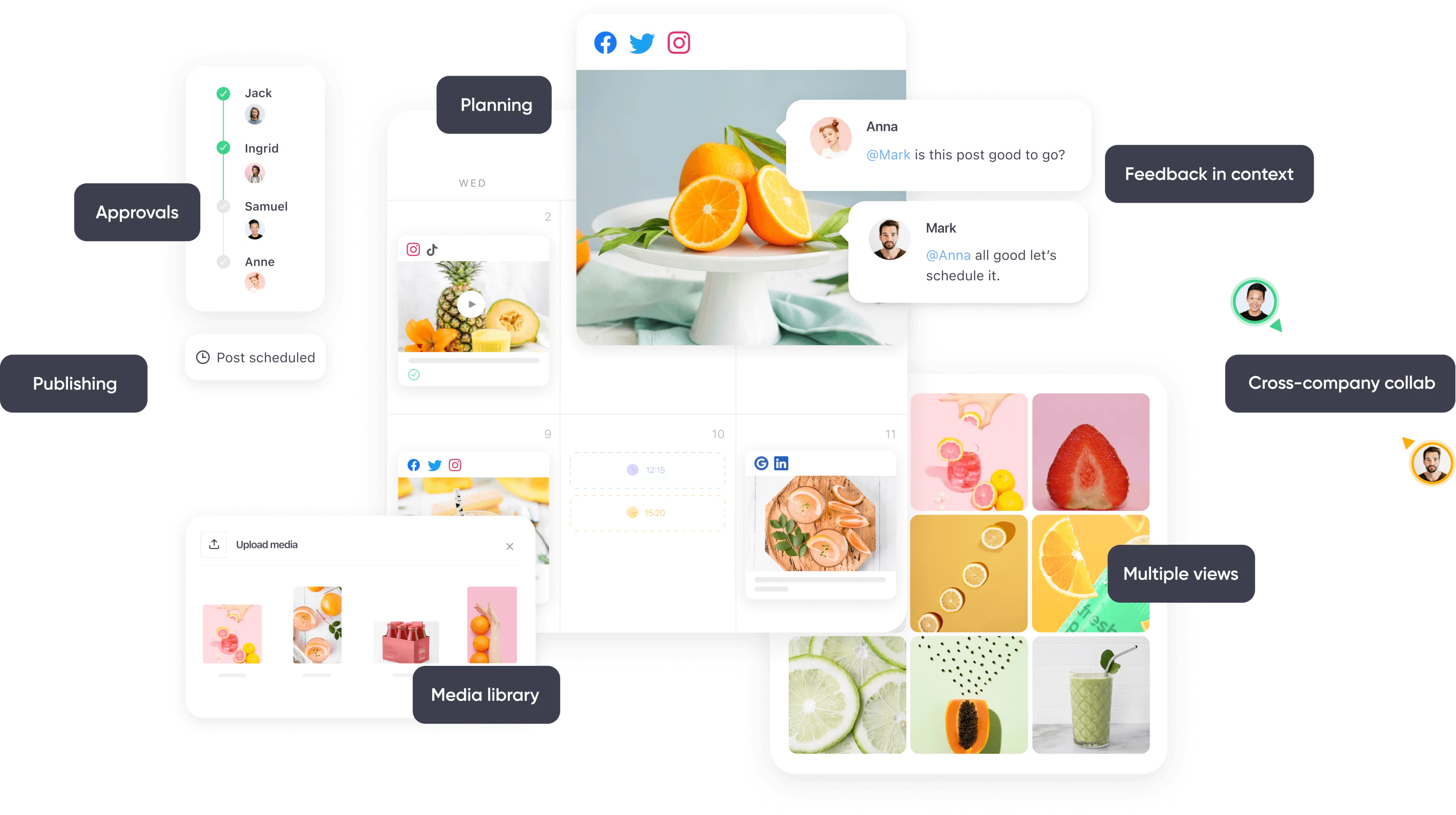

Planable handles anything and everything content planning-related. The platform lets you plan and collaborate on content through direct comments, annotations, and suggestions.
Its direct social media scheduling tools allow you to organize and roll out posts on most social networks with just a few clicks, while Planable’s built-in social media analytics features give you the insights necessary to adjust your strategy and bring in optimal results.
On top of that, the platform’s Universal Content feature handles any other type of written content — from creative briefs to fully-fledged blog posts or newsletters. Planable’s editing capabilities also extend to images and videos.
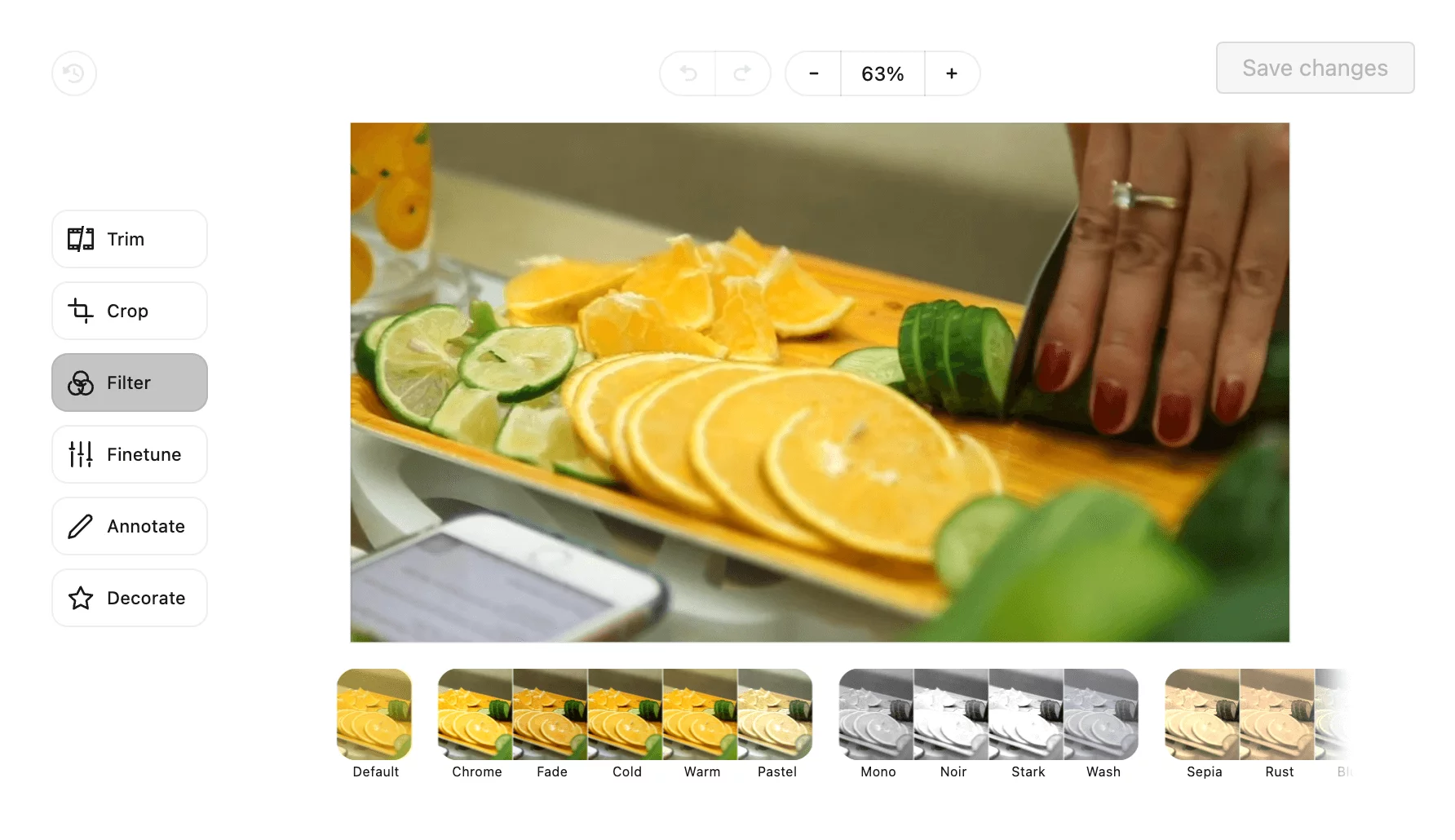

Image and video editing in Planable
You can adjust vignetting and saturation, pick between numerous filters, and so on. You can also store and manage your visuals in the platform’s built-in library. Planable also includes an excellent native approval functionality — something that Monday lacks.
Speaking of which, let’s get into more details and see how Planable stacks up against Monday.
Planning
The platform lets you plan and manage projects through feed, list, calendar, and grid views. The grid view emulates Instagram’s grid layout — perfect to organize Instagram-specific content and ensure you get your profile just right.


Content calendar in Planable
However, Planable’s calendar is the stand out here. You can plan all sorts of content through a drag-and-drop interface and track multiple projects via color-coded labels. Most notably, the platform lets you approve projects directly within your chosen view — all it takes is a single click.
Planable also makes it easy to find particular projects through its filtering options. You can sift through content by approval status (approved, pending, partially approved), post status (scheduled, unscheduled, published), content type, author, and much more.
Collaboration
Planable lets you streamline collaboration through direct comments, text suggestions, and annotations — similar to Google Docs but better. You can also collaborate on videos and images through comments.
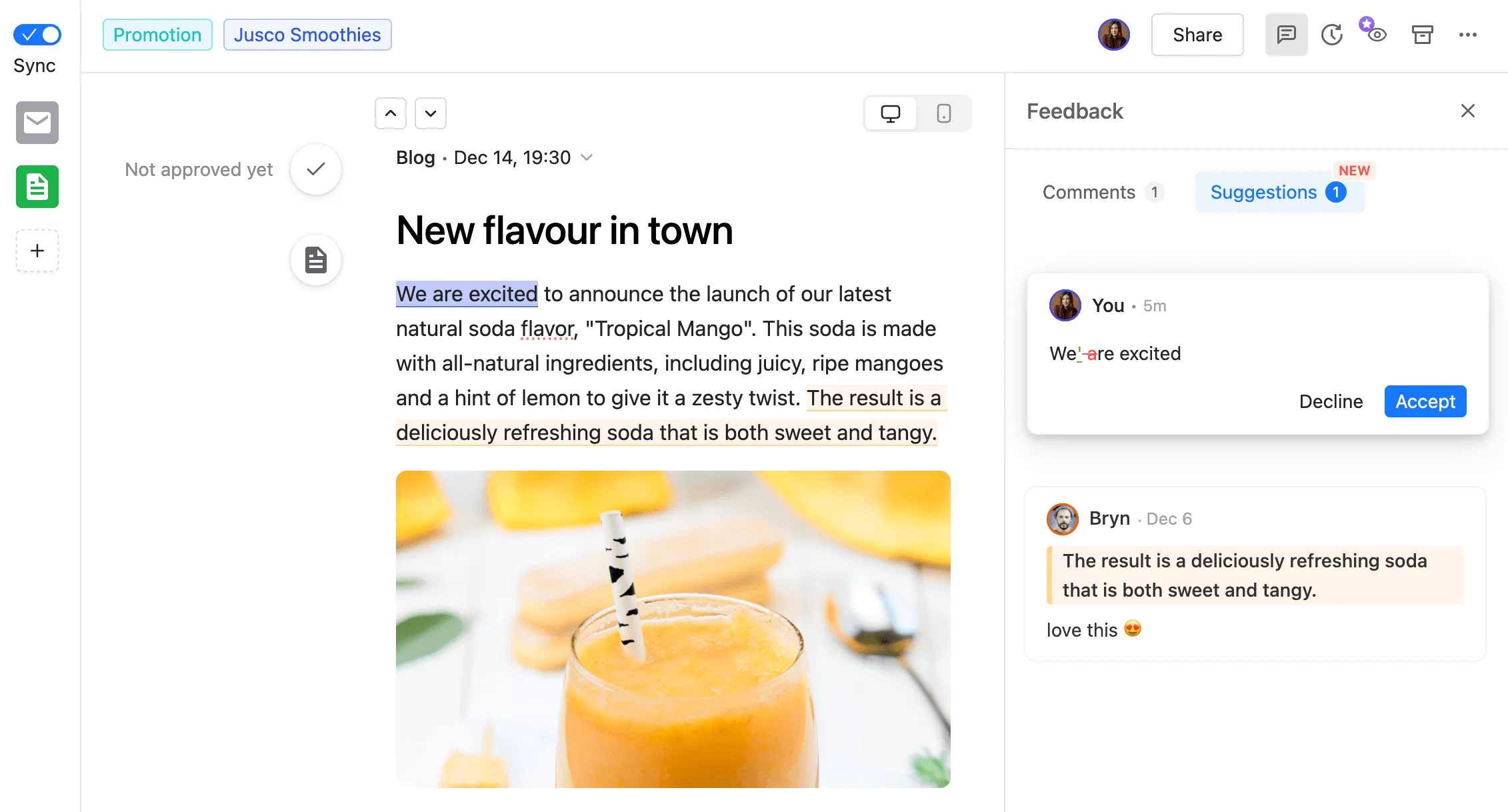

Collaboration on a blog post in Planable
The platform keeps team members up-to-date with project progress through its email and mobile app notifications.
You can also set up workspaces dedicated to specific teams or clients, while the platform’s internal notes and posts ensure your external stakeholders won’t see work-in-progress projects.
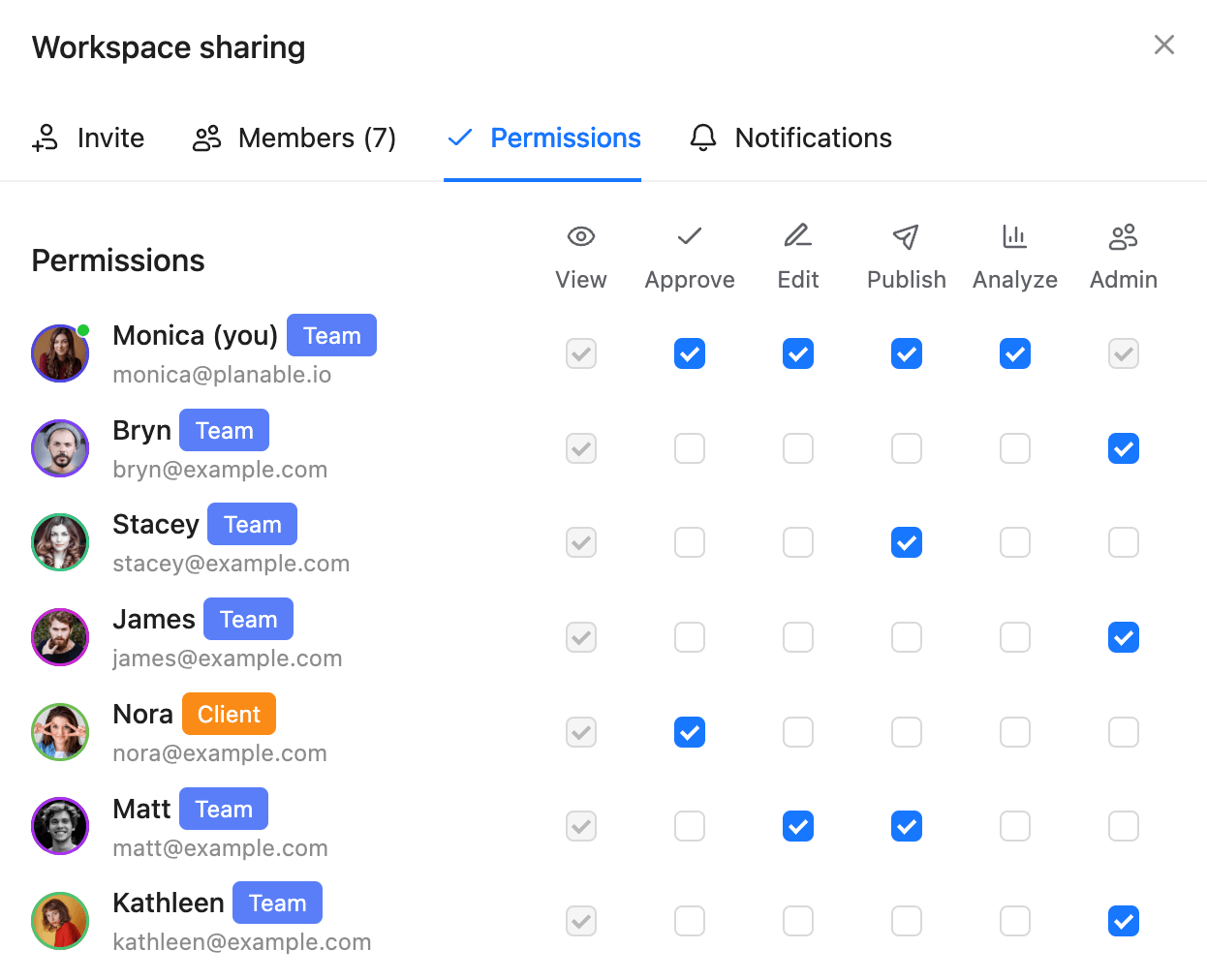

Workspace permissions and roles in Planable
You can invite clients or external collaborators via email or shareable links, as well as set custom user roles and permissions (viewer, approver, editor, etc.)
Approvals
Approvals are among Planable’s hallmarks. The platform lets you set up custom approval processes through four workflow types: none, optional, required, and multi-level.
No approval is a useful option whenever you work alone and want to spare yourself from a few extra clicks. Optional approval is excellent for small agile teams that can’t have a dedicated reviewer always on standby.
Multi-level approval is fantastic for establishing thorough review processes that involve numerous departments. For example, if you work in a team or agency where work needs to pass through internal checks before an external stakeholder gives the final approval.
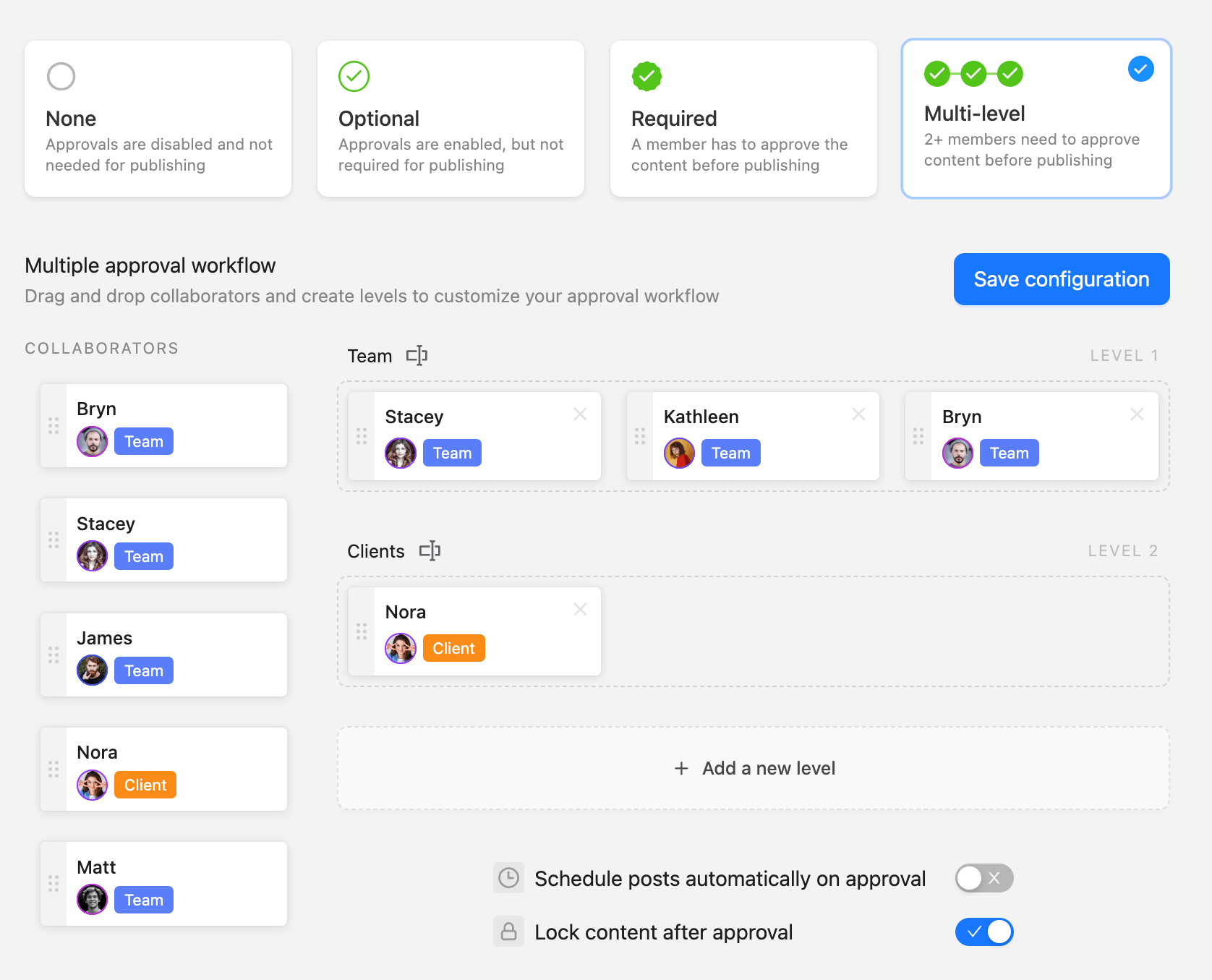

Multi-level approval flow in Planable
You can create an approval workflow with multiple layers, with each layer containing as many team members as you like. A project won’t get greenlit unless it passes through each distinct approval level.
Pricing: Paid packages start at $11 per user per month (billed annually). The free plan also allows you to schedule up to 50 posts.
Drawbacks: Although the platform lets you work on blogs, you can’t publish them directly from the platform — as you would with social media posts.
Planable vs Monday
- Feature set: Monday is better suited from a project management perspective, while Planable is perfect if you want more direct involvement between project managers and creative teams — especially for social media.
- Ease of use: Planable’s interface is much cleaner and easier to use. You can get started with the platform right away — no customization needed.
- Scalability: Planable is slightly more expensive to begin with, but its pricing plans are flexible based on the number of users and workspaces you want — better for scalability.
Takeaway: Planable is one of the best Monday.com alternatives for content marketing managers seeking a more hands-on approach to content creation and management.
2. GatherContent – best for managing content workflows
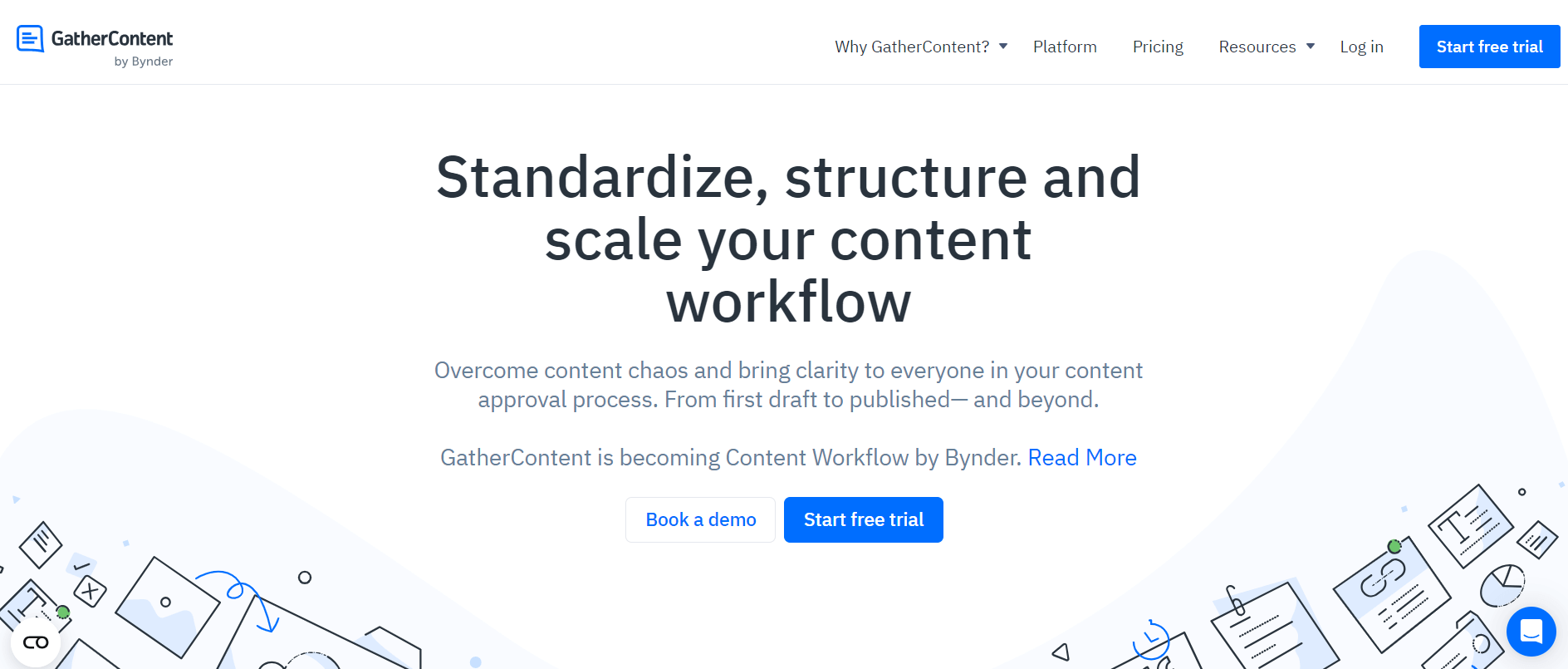

GatherContent is a content operations platform designed to handle creative processes from beginning to end.
GatherContent blends project management tools with content management-specific functionalities to help ideate, create, approve, and manage creative assets at scale.
For instance, the platform’s Content Workflow will automatically set up due dates and assignments, as well as move posts as they progress through your workflow — from the initial draft to publishing.
You can then see each project’s progress and whether it’s overdue via a straightforward interface.
Key features
Use the Content Hub to manage all your marketing campaigns from a single place. Get a high-level overview of each post’s status, assignees, and due date.
Work with teammates in real time through comments and annotations directly within the platform’s content editor.
Kickstart the content creation process through the platform’s templates fit for various formats — be it social media, email, blog, or website content. Customize templates via a drag-and-drop interface.
Pricing: GatherContent merged with Bynder and its features are now available in the Content Workflow plan. Pricing is available upon request with a 14-day free trial available.
Drawbacks: GatherContent lacks direct publishing capabilities.
3. Filestage – best for visual asset proofing
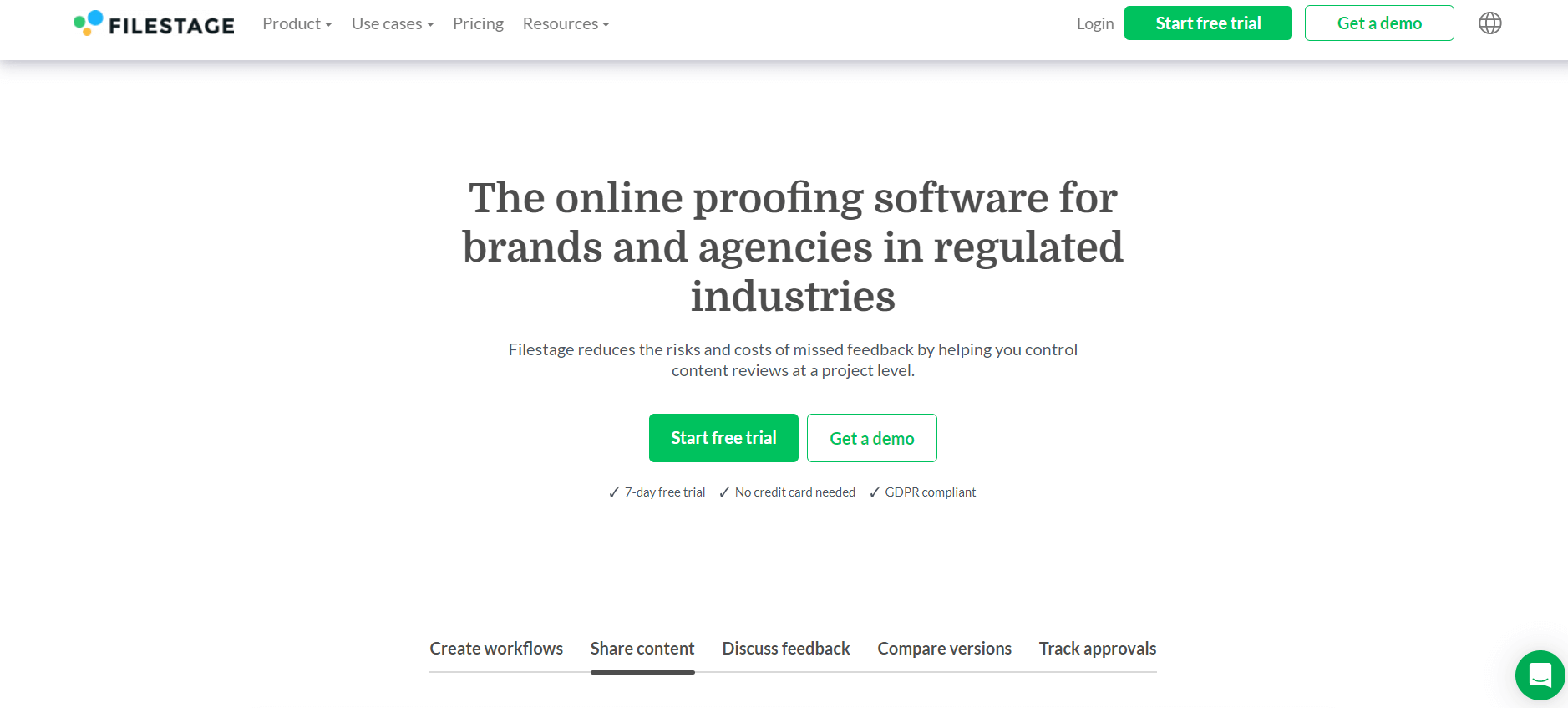

Filestage is an all-in-one proofing software that allows you to review texts, videos, and images.
The platform stands out through its ability to leave feedback on specific timestamps and annotate images through markings, pointers, or drawings — perfect for precise feedback on visual assets.
You can then compare multiple versions of the same project side-by-side to see whether feedback was implemented correctly.
Filestage also lets you establish thorough review processes through multi-level approvals, with the option to approve or reject files in bulk.
Key features
Collaborate with team members through comments, annotations, and mentions. Stay up to date with everything that’s going on with your projects via the platform’s Notification Center.
Plan and manage projects within a visual dashboard. Organize approval processes into internal and external reviews to track progress more effectively.
Gauge team productivity through the platform’s reports and gain the insights necessary to fine-tune your approval processes. See the average turnaround time per team, the number of files completed or currently in review, and more.
Pricing: Filestage includes a free plan, while paid packages start at $49 per month (billed annually).
Drawbacks: The platform’s interface is clunky, giving it a rather steep learning curve.
4. Sprout Social – best for social media reporting and analytics
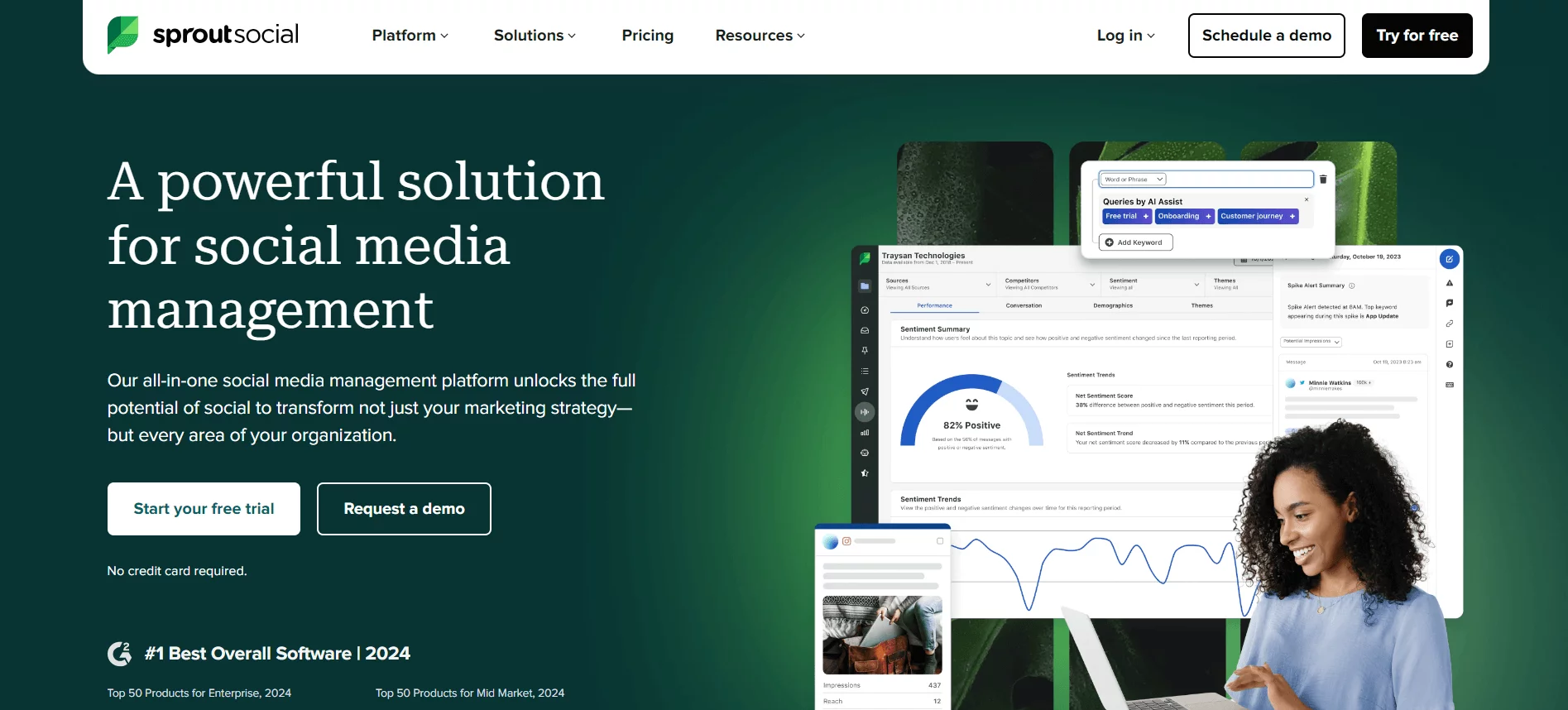

Sprout Social is an in-depth social media management tool with powerful reporting and analytics features. Besides network-specific analytics, Sprout Social also allows you to perform competitive benchmarking.
You can compare your social media performance against your competitors’ side-by-side based on various metrics, like engagement rates or follower growth. The platform also lets you compare organic content performance with your boosted posts to see which strategy yields the best results.
Other notable analytics features include hashtag monitoring, cross-network reports, and employee productivity monitoring.
Key features
- Social media inbox management
Organize comments, DMs, and brand mentions under a unified dashboard. Leverage the platform’s AI-powered sentiment analysis tools to prioritize messages based on their tone (neutral, positive, and negative), and delegate these messages to the appropriate team members.
Plan and publish content across multiple social channels via the platform’s calendar. Ensure your content gets maximum engagement with Sprout Social’s ideal posting time suggestions.
Create, store, and manage digital assets directly within Sprout Social — or import them via the platform’s integrations with Bynder, Canva, and Google Drive.
Pricing: Sprout Social starts at $199 per user per month (billed annually), with a 30-day free trial available.
Drawbacks: Sprout Social’s steep price tag may be out of reach for small teams with a limited budget.
5. Later – best for social media content curation
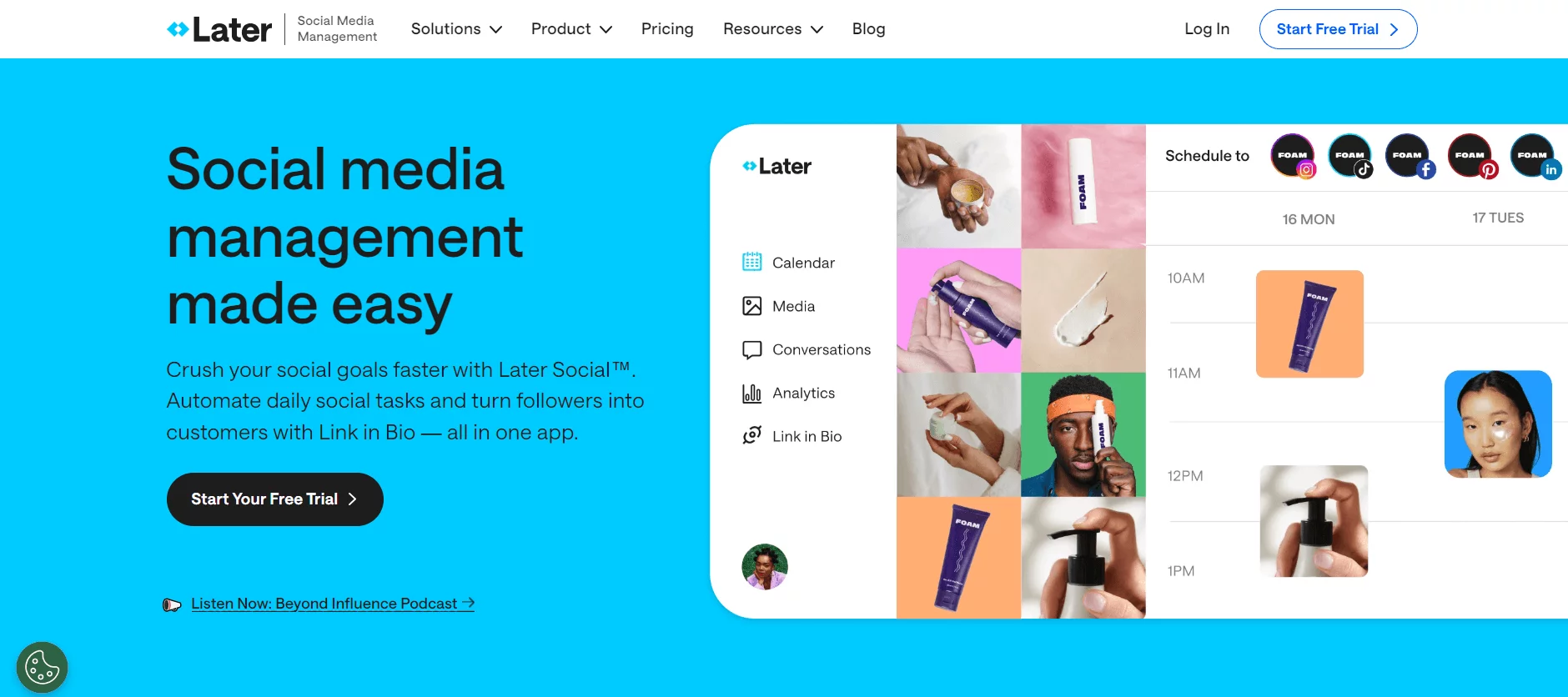

Later is an all-in-one social media management tool that stands out through its content curation tools. The platform lets you compile and save lists of hashtags, so you can easily find and engage with or re-share brand-relevant social media posts.
Later also allows you to search for Instagram content by profile, tags, or mentions, which you can then add directly to the platform’s media library. Most notably, Later automatically adds Instagram creator attribution when you schedule curated posts.
Key features
Generate audience demographics reports for Instagram, TikTok, and Facebook. Track Instagram Reels, Stories, and post performance, as well as generate network-specific reports for Pinterest and Twitter.
Schedule content for multiple social networks in bulk. Get hashtag and ideal posting time suggestions. Schedule Instagram Reels, Stories, and posts via a dedicated drag-and-drop Instagram planner.
- Content creation and editing
Leverage Later’s AI-powered assistant to generate content ideas and social media captions. Get automatic Instagram hashtag suggestions based on your post’s captions. Edit images and videos directly within the platform, or via Later’s native Canva integration.
Pricing: Later starts at $16.67 per month (billed annually). There’s a 14-day free trial available.
Drawbacks: Later’s functionalities mostly focus on Instagram and TikTok — the other supported networks lack audience demographic analysis, for example.
6. HeyOrca – best lightweight social media scheduler for agencies
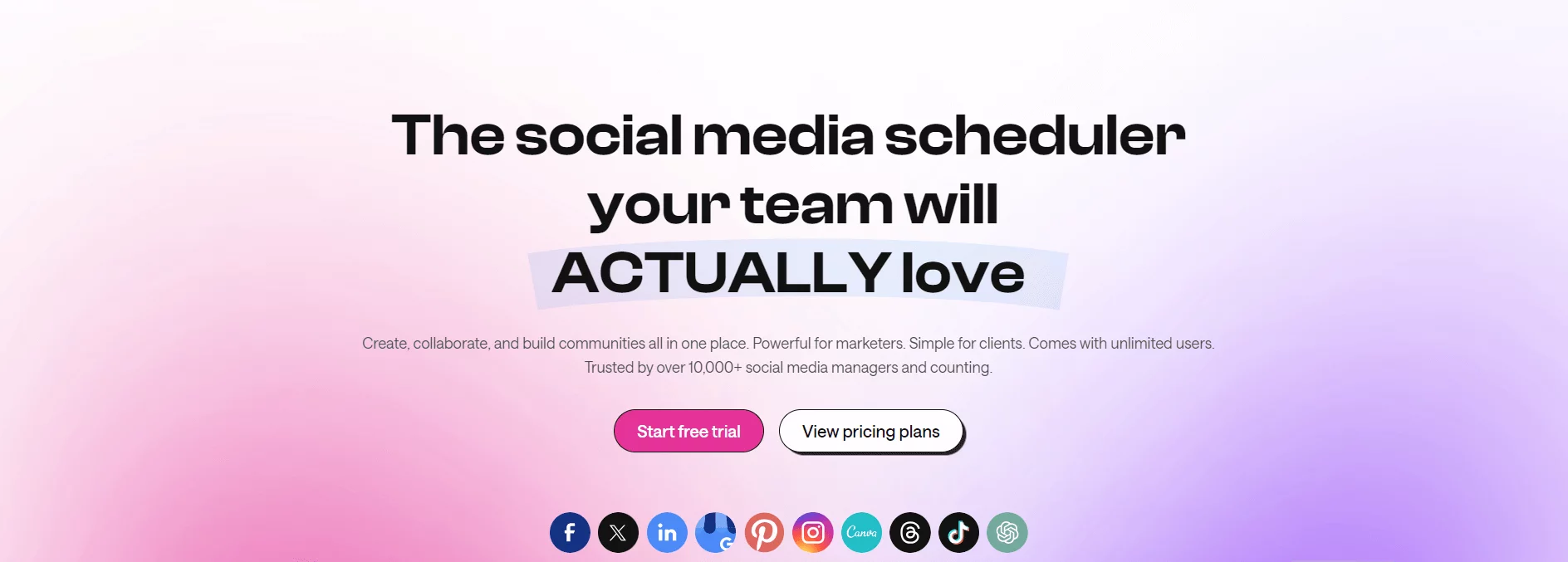

HeyOrca is a social media scheduler dedicated to social media agencies that handle multiple projects for different clients simultaneously.
The platform allows you to set up separate calendars for each client and its collaboration features streamline communication with external stakeholders. Clients can view your work, leave feedback, and approve or reject posts — no account required.
Key features
Plan social media posts and campaigns through a straightforward calendar view. Set up client-specific media and content libraries to keep work organized.
Set up separate internal and external approval workflows to ensure clients view the best possible versions of your work.
Collaborate with team members through internal comments and notes. See internal and external feedback side-by-side to better gauge team progress.
Pricing: HeyOrca starts at $35 per calendar per month (billed annually), with a 14-day free trial available.
Drawbacks: HeyOrca doesn’t include any other ways to visualize or collaborate on your work outside its calendar view.
7. Wrike – best project management software for automation
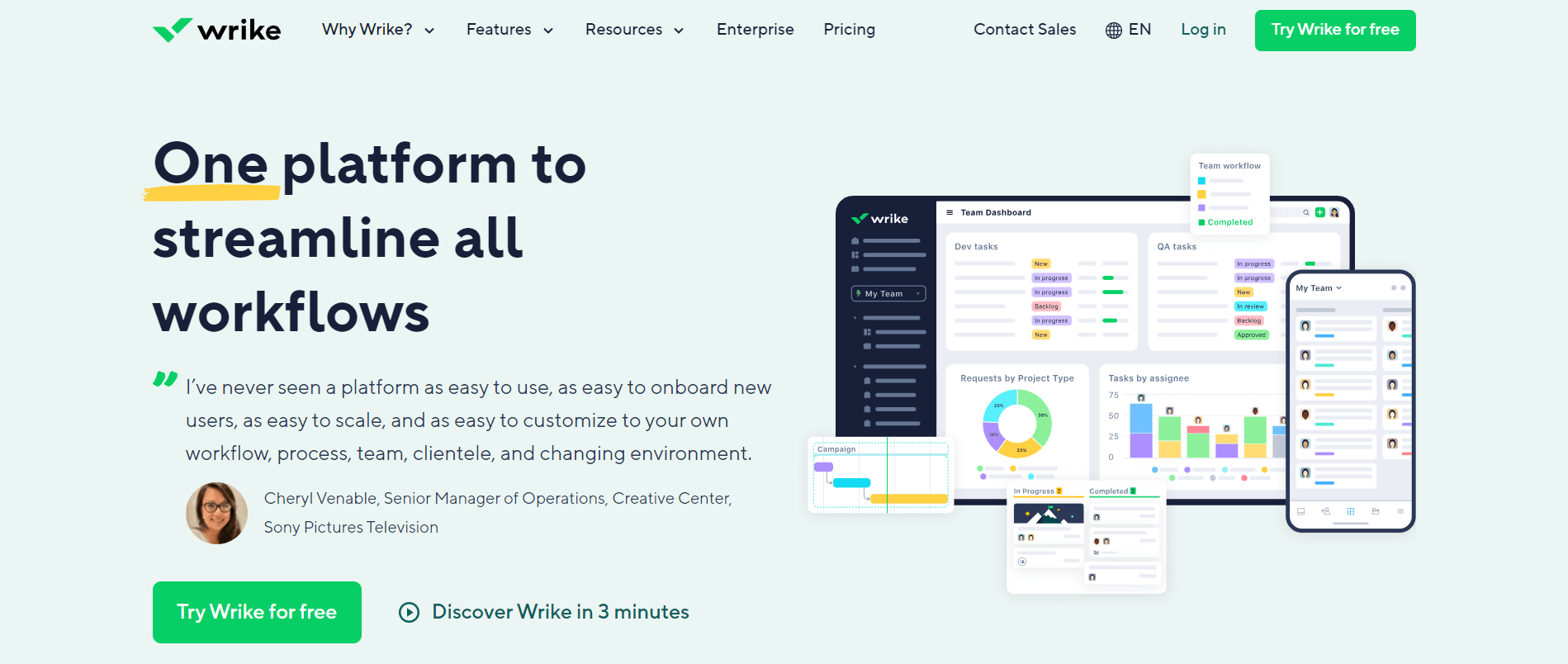

Wrike is an advanced project management tool with strong AI-powered features. You can leverage the platform’s AI to automatically generate project plans, task descriptions, and brainstorming documents.
The platform’s AI Project Risk Detection feature monitors your project’s progress to determine whether it’s at risk of missing the deadline and offers suggestions to prevent that from happening. Other automation features include a no-code workflow builder and automation suggestions to help eliminate tedious work.
Key features
Use the platform’s task management tool to create a series of sub-tasks and get a more granular approach to your work. Track tasks through highly visual dashboards and use Wrike’s Cross-Tagging tool to zoom out and see how each task and sub-task contributes to your overall project progress.
Work on images, videos, documents, and even webpages directly within Wrike. Leave precise feedback via annotations, and create both internal and external approval workflows. Compare multiple versions of the same file side-by-side to see whether feedback was implemented correctly.
Set up automated approval workflows, task dependencies, and request forms.
Pricing: There’s a free version available, while paid plans start at $9.80 per user per month.
Drawbacks: The platform’s file-proofing features are only available starting with the Business plan ($24.80 per user per month).
8. Trello – best visual project management software
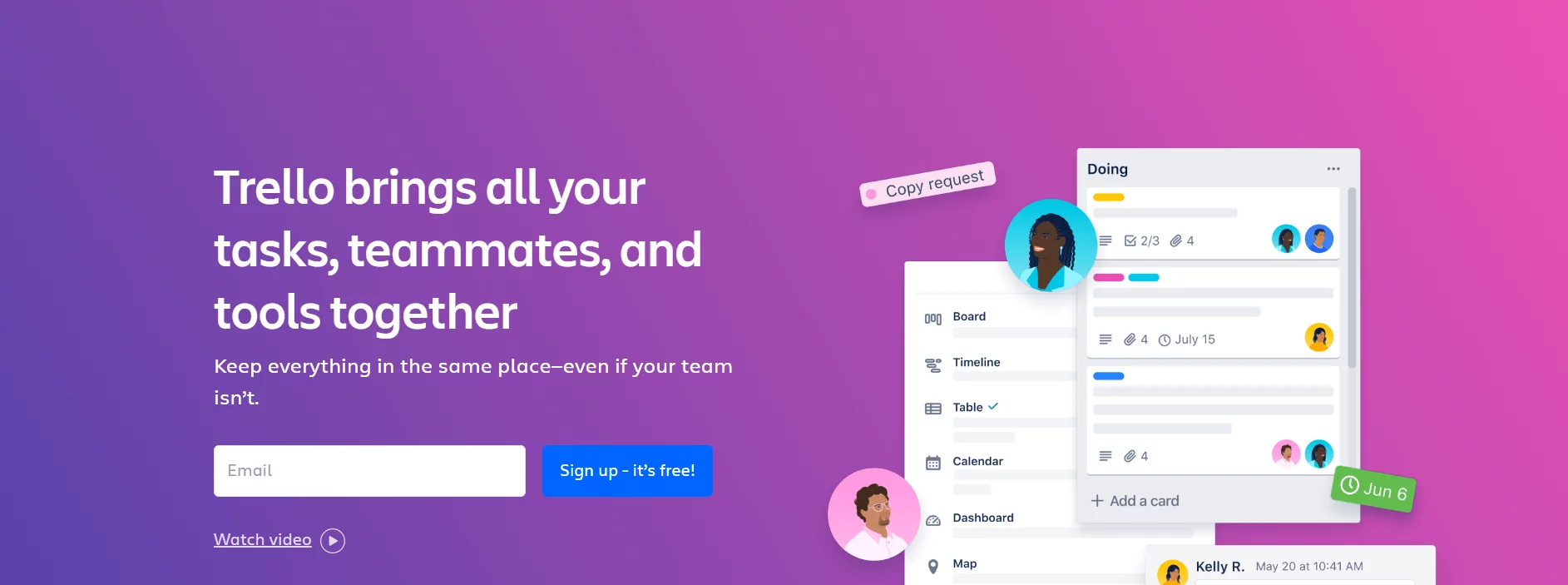

Trello is a simple project management tool that lets visually plan your projects through Kanban boards.
Each board is made up of multiple columns that represent your project’s status (like “To Do,” “Doing,” and “Done”). You can then see how your project tasks progress as they move across the board.
Trello also stands out through its numerous project templates — you can find ready-made templates fit for various use cases like content creation, editorial calendars, and more.
Key features
Automatically assign tasks to team members, set due dates, and have them move throughout the board via the platform’s no-code automation builder.
Leave comments, mentions, and attachments under each task.
Streamline project management processes via Trello’s 200+ integrations. Link the platform with tools like Slack, Jira, Miro, and more.
Pricing: You can use Trello for free. Paid plans start at $5 per user per month (billed annually).
Drawbacks: Trello lacks advanced features like resource management or time tracking, for instance.
9. ClickUp – best for resource management
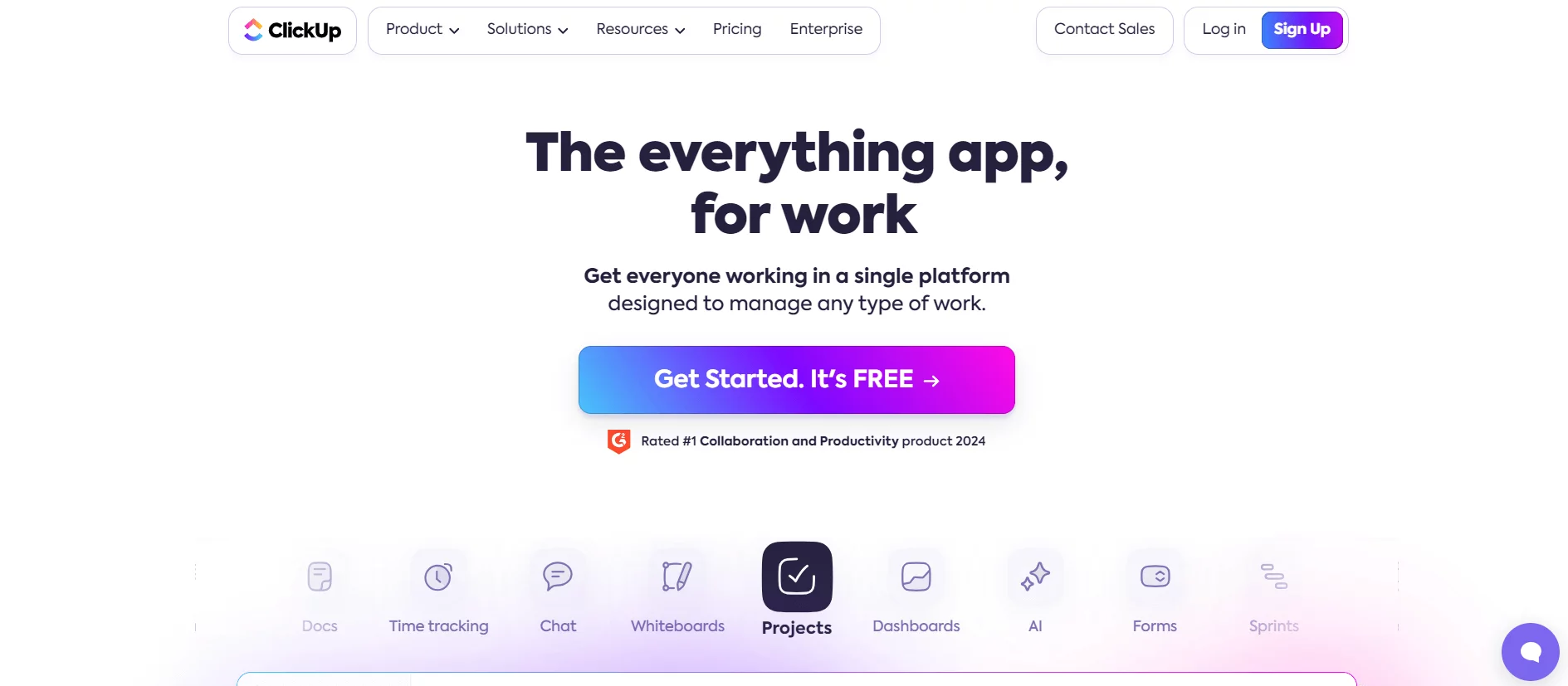

ClickUp is a comprehensive project management solution that handles anything and everything productivity-related — from taking care of basic task management activities via Kanban boards to handling complex projects through its portfolio management feature.
However, the platform stands out through its resource management capabilities. You can get a general overview of your team’s workload or get into the details to see how many tasks each team member deals with at any given time.
The platform also includes built-in time tracking and the option to set time estimates under each project or task.
Key features
Organize multiple projects into portfolios and get an overview of each project’s progress, team members, completed or overdue tasks, and more.
Create tasks and sub-tasks. Automate recurring tasks and create dependencies to ensure smooth workflows. Prioritize tasks based on their urgency and set up milestones.
Collaborate through task comments, built-in chats, and whiteboards, as well as handle file proofing directly within the platform.
Pricing: You can use ClickUp for free, while paid plans start at $7 per user per month (billed annually).
Drawbacks: ClickUp’s ample feature set gives it a steep learning curve — navigating it can be tricky and it takes a while until you get used to the platform.
Choose the best project management tools for your content workflows
And there you have it — the top Monday.com alternatives currently available.
When it comes to project management-specific tools, ClickUp is a great choice if you’re looking for something like Monday but with more advanced features, Trello is a solid free option, while Wrike is perfect if you’re running a large team and seeking to streamline work through automation.
But if you want to take a more hands-on approach to your creative processes, Planable is your best bet. Its multi-level approvals are top-of-the-line and the platforms let you seamlessly plan, collaborate on, and create both visuals and any type of written content.
Besides, you can schedule your first 50 posts completely for free!

